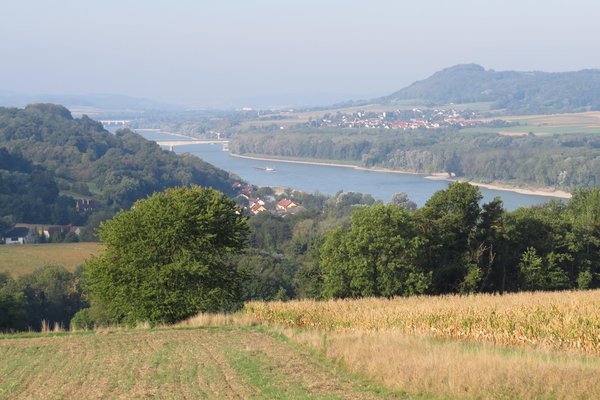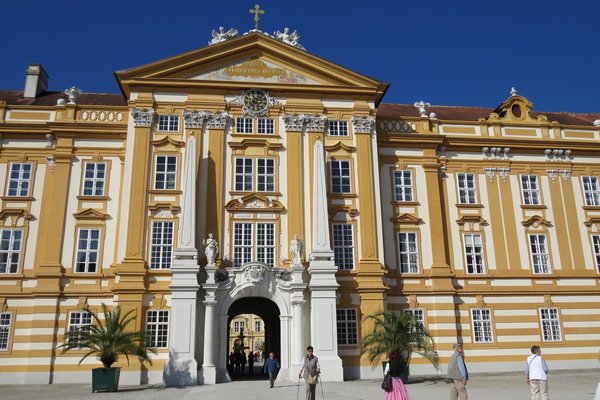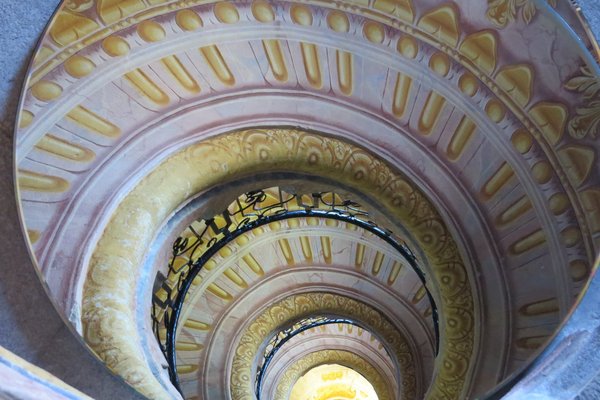Austria
Wachau Cultural Landscape
Wachau Cultural Landscape comprises the Danube valley between Melk and Krems which has seen a long historical evolution.
There has been human occupation in the Wachau from Palaeolithic times. It is well-known for its cultivation of apricots and grapes, which are used to produce specialty liquors and wines. It also has picturesque historic towns dating back to the Middle Ages and impressive buildings, such as the fine Baroque abbeys of Melk, Dürnstein and Göttweig.
Community Perspective: the area is best discovered by boat or by bike. Recommended are the Melk Abbey Church with its painted spiral staircases, the Gottweig Benedictine Abbey and villages and little towns such as Duernstein or Spitz.
Site Info
Official Information
- Full Name
- Wachau Cultural Landscape (ID: 970)
- Country
- Austria
- Status
-
Inscribed 2000
Site history
History of Wachau Cultural Landscape
- 2000: Inscribed
- Inscribed
- Type
- Cultural
- Criteria
- ii
- iv
Links
- UNESCO
- whc.unesco.org
- Official
-
- weltkulturerbe-wachau.at — Weltkulturerbe Wachau
- Related
-
- museumkrems.at — Museum Krems
- kunstmeile-krems.at — Kulturmeile
- duernstein.at — Duernstein
All Links
UNESCO.org
- whc.unesco.org — whc.unesco.org/
Official Website
- weltkulturerbe-wachau.at — Weltkulturerbe Wachau
Related Resources
- museumkrems.at — Museum Krems
- kunstmeile-krems.at — Kulturmeile
- duernstein.at — Duernstein
- weissenkirchen.at — Weissenkirchen
- stiftmelk.at — Stift Melk
- stiftgoettweig.at — Stift Goettweig
News Article
- Nov. 1, 2022 euronews.com — Melk Abbey is being restored
- May 15, 2016 derstandard.at — New building plans in Wachau make waves
- Dec. 7, 2011 worldarchitecturenews.com — New Marine and World Heritage Centre in Krems
Community Information
- Community Category
- Cultural Landscape: Continuing
Travel Information
Exact locations inscribed twice (or more)
Recent Connections
-
Perfect Inscriptions
2000 -
Depicted in Mizielinska Maps
Melk Abbey, Krems Steiner TorSee i.pi…
-
Built in the 9th century
"The clearing of the natural forest by …
Connections of Wachau Cultural Landscape
- Individual People
-
-
Richard Lionheart
Prisoner at Duernstein -
Napoleon was here
Naploeon "stayed" at Melk Abbey in 1805/6 and 9 using it as an HQ. He is said to have particularly used the Terrace with its views to plan his campaigns -
Elias Burton Holmes
See www.youtube.com
-
- Geography
- Trivia
-
-
Replica in Mini-Europe
-
Depicted in Mizielinska Maps
Melk Abbey, Krems Steiner TorSee i.pinimg.com
-
On Banknotes
100 schilling 1955See de.wikipedia.org
-
- History
-
-
Neolithic age
The region of Krems and Melk was densely settled as early as the Neolithic period (4500-1800 BCE) (AB ev)
-
- Architecture
-
-
Sgraffito
Sgraffitohaus Krems -
Baroque
Melk Abbey, Gottweig Abbey -
Gothic
Piarist Church in Krems (one of the Wachau's main tourist attractions) -
Vernacular architecture
The entire Wachau with its historic and vernacular buildings, with the picturesquely interrupted hill ranges on either side, with the river in its midst, is a big and lively Gesamtkunstwerk (nom file) -
Domes
Melk Abbey: great dome
-
- World Heritage Process
-
-
Perfect Inscriptions
2000 -
Exact locations inscribed twice (or more)
7 locations of the Danube Limes lie also within the Wachau Cultural Landscape
-
- Religion and Belief
-
-
Jewish religion and culture
Jewish cemetery in Krems -
Fortified religious buildings
Weissenkirchen Church -
Protestantism
Schloss Spitz 1613-1720 -
Augustinian Order
Stift DSee de.wikipedia.org
-
Calvary
Muhldorf -
Dominican Order
Dominican Monastery at Krems -
Jesuit Order
Jesuitenkolleg in Krems -
Servite Order
the early-Baroque, former Servite Monastery Schönbühel (nom file) -
Hercules
Herkules Brunnen in Krems (Der Brunnen am hohen Markt hat ein gebauchtes, quadratisches Becken mit Eckpostamenten, eine steinerne Brunnensäule mit reliefierten Delphinen und eine Herkulesstatue mit Doppeladlerwappen.) wiki -
Benedictines
Melk and Gottweig -
Goddesses
Venus of Willendorf
-
- Human Activity
-
-
Frescoes or murals by famous painters
frescoes by Daniel Gran in Kloster Und -
Man-made Terraces
vine terraces -
Festivals
Donaufestival, Wachau Film Festival -
Vineyards
-
- Constructions
-
-
Hospitals
Kloster Und in Krems served as a hospital. -
Railways
Wachaubahn -
Frontier walls
Roman Walls in Mautern as part of the limes -
Pillories
At Dürnstein -
Monumental Fountains
Simandl Fountain in Krems -
Plague Column
Column in Krems an der Donau and in Melk -
Cemeteries
Jewish cemetery in Krems -
Prison
Duernstein
-
- WHS on Other Lists
- Timeline
-
-
Built in the 9th century
"The clearing of the natural forest by local peoples began in the Neolithic period, although radical changes in the landscape did not take place until around 800, when the Bavarian and Salzburg monasteries began to cultivate the slopes of the Wachau, creating the present-day landscape pattern of vine terraces." (Official description) -
Built in the 18th century
From 1700 onwards, artistic and architectural monuments that are among the most important examples of Austrian Baroque were built in the Wachau. These include the rebuilding of Melk Abbey (begun in 1702), the conversion of the Canons' Abbey in D?rnstein (1715?33), and the large-scale rebuilding of G?ttweig Abbey from 1719 onwards. (AB)
-
- WHS Hotspots
- Science and Technology
-
-
Coronelli globes
In the library of Stift Melk -
Libraries
Stift Melk's Monastic Library & Göttweig Abbey: The abbey has a library of 130,000 books and manuscripts, and a particularly important collection of religious engravings, besides valuable collections of coins, antiquities, musical manuscripts and natural history, all of which survived the dangers of World War II and its immediate aftermath almost without loss.
-
News
- euronews.com 11/01/2022
- Melk Abbey is being restored
- derstandard.at 05/15/2016
- New building plans in Wachau make …
- worldarchitecturenews.com 12/07/2011
- New Marine and World Heritage Cent…
Recent Visitors
Visitors of Wachau Cultural Landscape
- Adrian
- Adrian Turtschi
- Afshin Iranpour
- AK
- Alberto Rodriguez Gutierrez
- Alexander Barabanov
- Alexander Lehmann
- alicemears
- Ali Zingstra
- A. Mehmet Haksever
- Ana Lozano
- AndreaTLV
- Anna Wludarska
- Anne
- anthonybonbon
- Antonio J.
- Argo
- Artsybrea
- AS
- Assif
- a.thum
- Atila Ege
- awestix
- AYB
- BaziFettehenne
- bergecn
- Bill Maurmann
- Bin
- Birgitte Sørensen
- Boj
- Brendan Carroll
- Bropyk
- butterflybird
- CampbellME
- Can SARICA
- Carlos Sotelo
- Caspar
- chenqtao
- Cheryl
- ChrisN
- Christer Sundberg
- Christian Wagner
- Christine
- christof
- Claire Bradshaw
- ClaraHH
- Clyde
- Colossus
- Corinne Vail
- Cristina Erba
- Csaba Nováczky
- CugelVance
- cwthong
- Dagmara
- Daniel Chazad
- Daniel Gabi
- Danny L
- Dan Pettigrew
- David Aaronson
- David Berlanda
- debatecoach
- Dimitar Krastev
- Dimitrios Polychronopoulos
- Dirk-pieter
- disnsam
- Dolemite92
- Don Irwin
- Dorejd
- DouglasR
- Dwight Zehuan Xiao
- Echwel
- Elisabeth Fransisca Situmorang
- Els Slots
- EmmonsLiu
- erdsaumnaht
- Eric Lurio
- Erik Jelinek
- Errol Neo
- Eva Kisgyorgy
- Fan Yibo
- Farinelli
- Feldhase
- Femke Roos
- Filip Murlak
- FK
- FrankW
- Frederik Dawson
- FS
- Gabor
- Garrett
- Gary Arndt
- George Gdanski
- GeorgeIng61
- GerhardM
- Gernot
- Grzegorz Andruszkiewicz
- HaraldOest
- Harald T.
- Harry Mitsidis
- henrik_hannfors
- heywhatever2
- Hubert
- Hurrvinek
- Iain Jackson
- Ian Cade
- ih0000
- Ingrid
- Ivan
- Ivan Rucek
- ivantham
- Jakob F.
- Jakubmarin
- James Bowyer
- Jana and Matt
- janem
- Janina Lehmann
- janis
- Jan-Willem
- Jarek Pokrzywnicki
- Jarrod_Byham
- Jeanne OGrady
- Jesse S 2010
- Jezza
- J_neveryes
- João Aender
- JobStopar
- Joel on the Road
- Johan
- Jonas Kremer
- jonathanfr
- Jon Bauer
- JR's HERITAGE SITES
- KarenBMoore
- Kbecq
- Kerékgyártó
- Kjlauer
- Klaus Freisinger
- Knut
- KoenigMarke
- Krzysztof B
- Kurt Lauer
- LaVale
- lichia
- Lithobates
- ljowers
- Luboang
- Ludvan
- Luis Filipe Gaspar
- Maciej Gil
- Mahuhe
- Malgorzata Kopczynska
- Małgosia Łupicka
- Manuelfunk
- marcel staron
- marc Rouserez
- Martin
- Martina Rúčková
- Matejicek
- Matthewsharris
- MaxHeAnouBen
- MichaelH
- Michael Novins
- Michael Turtle
- Mikko
- Mikko Syrjä
- Mohboh
- MoPython
- nan
- Nihal Ege
- PabloNorte
- Patrik
- Patrik_globe
- Paul Schofield
- PeterH
- Petteri
- Philipp Leu
- Philipp Peterer
- Pincze
- Porcho
- Purrfect
- Rafał Kałczuga
- Ralf Regele
- Randi Thomsen
- Reiseblitz
- Reisedachs
- Remigiusz
- Rick Ohm
- RJPTravel
- RobRos
- Roger Ourset
- Roman Bruehwiler
- Roman Raab
- Rudegirl
- Sabrina Liebehentschel
- sandersx2
- Sandmann15
- sbshipway
- Sehnsuchtsbummler
- serghei.belous
- Sergio Arjona
- Shandos Cleaver
- shoaibmnagi
- Slavi
- Solivagant
- Stanislaw Warwas
- Stefan A. Michelfeit
- Stijn
- Svein Elias
- Szabolcs Mosonyi
- Szucs Tamas
- takanenohana
- Tamara Ratz
- Taotao Chen
- tedchang
- Tevity
- Thomas Buechler
- Thomas van der Walt
- Thorben
- Tim Allen
- Tom Flaten
- Toxicologist
- travellingcat
- triath
- Tsunami
- Vanessa Buechler
- Van Hung
- VB73
- Veronica
- Viaje al Patrimonio
- VLabhard
- voyager
- WalGra
- Walter
- Waxwing
- Westwards
- WILLIAM RICH
- Wimmy
- Wojciech Fedoruk
- YaroMir
- Yevhen Ivanovych
- Zoë Sheng
- Zsuzsanna Forray
Community Reviews
Show full reviews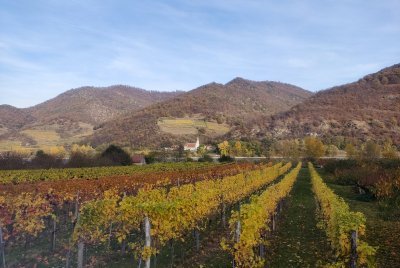
I visited the wachau region on wednesday the 8th of nov. as well as on thurday the 9th of that month. I arrived quite late around 21.00 in Melk on november the 8th.After my check-in at the hotel "weisses lamm" I strolled through the city of Melk for around 3 hours,taking some pictures of the huge monastery during night time both from the river side as well as from the city centre side.I also enjoyed a good schnitsel and some local beers.
I had pre-booked a guided tour(15,50€) through the benedictine monastery of melk the following day at 11.00. I was up very early and had another stroll through the pleasant town of Melk.I also had a quick look at every accessible area of the monastery before the official tour began.I also visited the northern bastion with the Wachau lab and a panoramic terrace.Without intention I entered the bastion through the shop exit and visited the panoramic terrace for free. When I left I noticed that you have to pay a quite hefty entrance fee for that building and its changing special exhibitions(I didnt spent more than 2 minutes in the exhibition area as I am not a fan of totally bizarre contempary art) .Sorrrowly, the baroque garden pavillon as well as the garden were closed to the public in winter time. The tour itself was interesting and informative but overpriced IMO.A guided tour of the monastery includes the imperial staircase, the imperial corridor, the abbey museum, the marble …
Keep reading 0 comments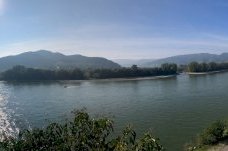
October 2021 - I had been several times to Vienna and also got to know the Donau between Vienna and Bratislava, but never managed to visit the Wachau. This time we came by camper and were here right during grape-harvest. So perfect time to have some „Sturms“. In the morning hours we entered Krems and walked around this rather calm, unexciting little town. Across the river in Mautern we visited remains of the Danube Limes but decided to continue on the north bank of the Donau again. Although crowded with tourists we parked in the vineyards of Dürnstein, had some wine and Vesper at a local Heuriger, before we walked through the charming little Austrian village. The cars are directed underneath the town, thus the view at the Donau is wonderful at this place. After tasting some obligatory specialities, we drove further so Spitz in search for vinyards offering authentic austrian food. This part was rather disappointing though, I guess you have to drive inlands which we did not do. Consequently we ended up in Melk that night, where we had at least big Schnitzels and stayed overnight at the feed of the famous Abbey. At the end we only spent a day in the Wachau, but the Journey through Czechia was worth it.
Keep reading 0 comments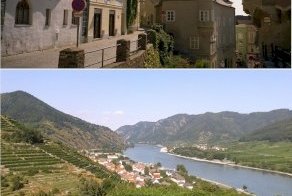
Wachau belongs to my favorite WHSs in Austria, and I visited already several times. My last visit was in Summer 2013, when I joint a cycling trip of my friends despite the fact: I hate cycling(!) so, I had to manage traveling by other ways. We traveled from Czechia by car through Waldviertel, which is a forested highland. The contrast of the typical Central-European landscape and the Mediterranean-like Danube valley is really impressive and somewhat surprising. Danube is fairly clean in Wachau and we enjoyed swimming, watching birds and even crayfish in clean waters. Even though there is quite busy traffic of both cars and bicycles along the river, it is always possible to escape to river beaches or to surrounding hills with picturesque views.
Well, Wachau is enjoyable even for persons suffering from an allergy to vineyard WHSs, because its OUV is not based solely on the vineyards. Besides the natural beauty of Danube river, I enjoyed villages and little towns such as Duernstein or Spitz (PHOTO-bottom: view from the castle ruin above Spitz). To say something negative about Wachau, I was a bit disappointed by Melk monastery. Due to the relatively wide valley around Melk, the monastery appearance from the river was not such monumental as I expected. Further, the Melk monastery is overcrowded by tourists and I had a feeling of tourist trap. In contrast to Melk, I enjoyed my visits to Krems (PHOTO-top) and Stein with their streets, old townhouses and 13th Century churches much …
Keep reading 0 comments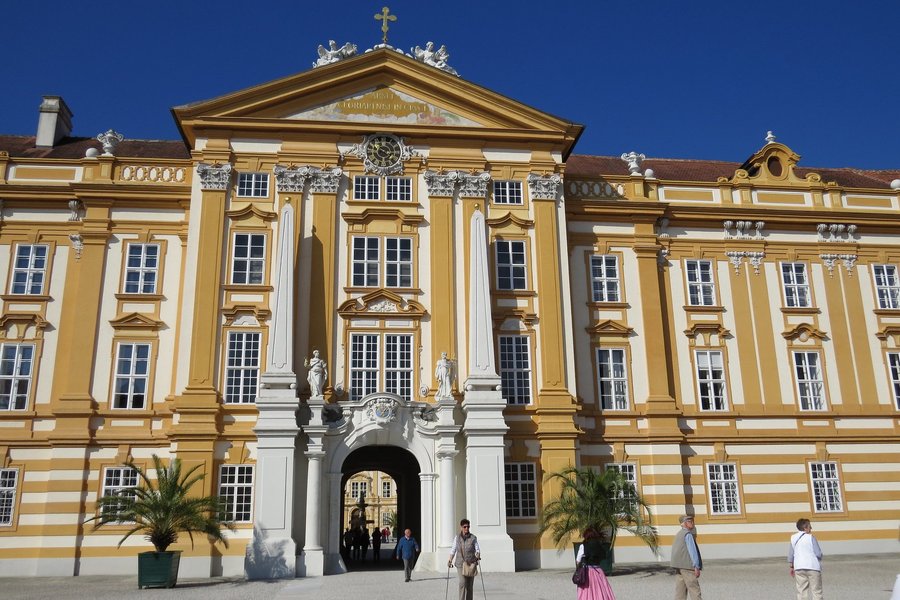
The Wachau is a riverine landscape in Northeast Austria. Here, the Danube flows for 36km through a fertile valley that has been used since the Middle Ages for growing apricots and grapes - yes, this is another viticulture WHS. Fortunately, they have thrown in several palaces, castles and picturesque historic town centres to enhance the visitor experience. A wealth of individual monuments and places has been highlighted in the nomination file.
I visited on a Sunday and thought it would be a nice idea to start the day with a hike, enjoying the river views. I parked my rental car in Schönbühel, a small town east of Melk. An oversized palace dominates the town center. It provided a tantalizing start, though you cannot get in because it's in private use.
Just as in Neusiedl, which I visited the day before, cycling is very popular here: one can traverse the entire Danube valley on a smooth bike path. Unfortunately, there is no separate trail for hikers, and there’s a lot of noise from car traffic on the parallel road. Hiking by far turned out less pleasant than I had imagined. When I also could not find the follow-up signs for my planned 2-hour ‘Steinwandweg’ walk, I decided just to push straight on for 5 km to the city of Melk. I had planned to visit it later in the day, but now I arrived already at 10.
Melk is a major crossroads in the Wachau: it holds one of the few …
Keep reading 0 comments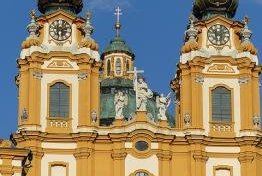
I visited this WHS in August 2015. I spent 2 days in the Wachau valley. Unlike many tourists, I decided not to visit this great Austrian WHS as a day trip (train-abbey-cruise-train) from Vienna but to base myself in the quaint village of Melk. It turned out to be a wise option as early morning and late afternoon were quieter and cooler to visit too in the Summer. During the first day I visited the massive Melk abbey. While driving to Melk, the abbey is almost hidden in the Wachau valley but once I approached the corn fields just a few kilometers away, I could admire the sheer size of this recently restored abbey. The best light for photography of the Melk Abbey Church is sunset although the morning light is perfect to take pictures from the abbey terrace or inside the abbey courtyards. The highlight of my visit was definitely the spiral painted staircases. Most tourists stop to take pictures of the first staircase they descend to reach the church, however I recommend heading directly opposite this staircase towards the exit as there is an identical one that leads to the library (closed to the public) which is perfect to take pictures of without having to "photo-chop" a couple of curious tourist heads. The library is worth viewing too although it doesn't compare to the one in St. Gallen or others I visited. Another abbey worth visiting is the Gottweig Benedictine Abbey, which is part of the Austrian Route …
Keep reading 0 comments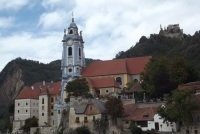
I took Klaus' advice and took a cruise along the Danube between Melk and Krems. The majestic architecture of Melk Abbey and Durnstein were awe insiring. But the relaxed atmosphere of watching the Wachau landscape drift past was special. It was one village after another, interspersed with castles and vinyards.
To avoid the exorbitant hotel prices in Vienna I stayed at a delightful gasthof in the village beneath Melk Abbey.
Keep reading 0 comments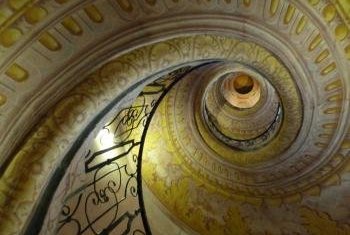
A trip to the Wachau valley really is an impressive day trip from Vienna.
I started off my trip with a guided tour of the abbey at Melk. It really was striking, sitting on a bluff looming over the small town below. In winter the only way to see the interior of the abbey is to go on a guided tour. I normally dread these in such grand places; however this one was pretty inspiring. We were shown around by a resident nun how did a great job of contextualising everything we saw. I was happy that the museum was laid out to show the evolution of the abbey and the art with in it, rather than just highlighting some dusty ornate furnishings.
The highlight is undoubtedly the magnificent baroque library. Another site well worth seeing is the chapel which is an over-the-top baroque masterpiece. You can visit the chapel without going on the tour, but you are restricted to a small side section, however you can see the whole interior from there.
After a quick coffee I headed off on a small post-bus that drove me the whole length of the valley to Krems. This gave me good view of many of the major sites of the valley, without having to brave the freezing conditions.
In Krems I had a lovely walk through the cobbled streets hunting out some of the wine that is produced on the river banks that I had just driven through. After a meal and …
Keep reading 0 comments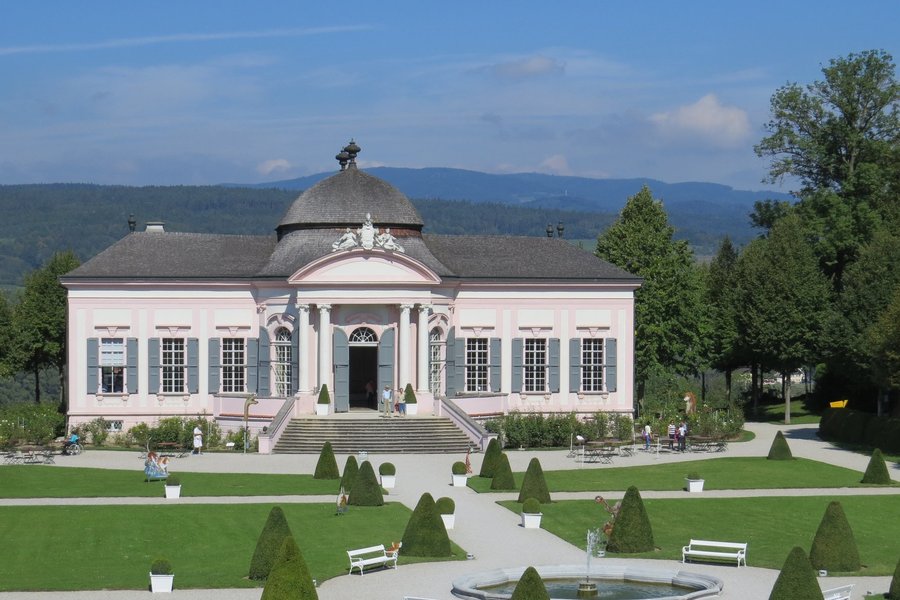
On a day trip from Vienna I went to both Krems, Weißenkirchen and Dürnstein. Both proved to be quite a pleasant surprise.
Krems is the central town of the Wachau and has a nice historic town with a monastery to be visited. Some modern museums are nearby, notably a very good caricature museum. From Krems you can take the Wachau Train which goes along the left Danube bank through the Wachau villages. Weißenkirchen is the first stop. It is the village displaying the oldest architecture. It is very picturesque with its enormous medieval fortified church in the middle of the village. Dürnstein (the next stop of the train) is probably the prettiest of the three and is overloaded with tourists on weekends. It is beautifully located along one of the Danube's curves, amongst vineyards and near the ruins of Dürnstein Castle. Its most spectacular views are from the local Jesuit monastery that can and should be visited exactly for this reason.
The Wachau is very compact and easily accessibly with public transport from Vienna. Note that there are no bridges so if you want to visit famous Stift Melk you have to take a different train from Vienna or go all the way to Sankt Pölkten. Famous local products are wines and apricot jam.
Keep reading 0 comments
The Wachau Valley is really a magical place. It has almost mediterranean character somehow unexpected in the middle of a bit boring fields and forests typical for central Europe. Valley itself decorated with such monumental buildings like Melk monastery is incredible. However, I enjoyed very much antient parts of Krems and Stein, especially several churches and palaces dated back to 13th century.
Keep reading 0 comments
The Wachau Valley is incredible. I was fortunate enough to spend a couple days in Waldkirchen on a VBT Bicycling vacation this past June.
We stayed in the Raffelsberger Hof bed and breakfast, feasting on Marillen preserves, and spent three days pedaling up and down the Danube. Highlights included the Benedictine Abbey in Melk, hiking up to Dürnstein for a sunset picnic and biking through the farmer's market in Ottensheim, only to find Raku pottery, a wealth of recycled jewelry and incredible woolens from around the valley. VBT treated us to a fine sampling of Grüner Veltliners and Reisling wines in a refinished wine cellar in Waldkirchen, and after a long day of riding, that sweet, aromatic white wine simply hit the spot.
If you are interested in exploring the Wachau Valley, I encourage you to take a bike tour. Free from a tour bus, I was able to explore the countryside at my own pace, inhale the sweet aroma of apricots along the flood plains of the Danube, and enjoy white wine sabayon and Marillenkuchen (apricot cake) at the end of the day, without feeling guilty.
Keep reading 0 comments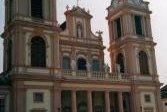
In the Wachau valley we have been only at the Göttweig abbey, founded in 1074 by the Augustinians on a hill on the right Danube bank. Across the entrance portal, near which is an the Porter's Lodge, remain of an ancient medieval castle, you pass to the main court, where is the Baroque church, with two towers and a porch projected by C. Biasino and J. L. von Hildebrandt. Inside is the Baroque nave and the Gothic apse, with chapels, tombs, an organ, a pulpit by H. Schmidt, altars, stuccos, a treasury paintings by Kremser Schmidt and A. Wolf and a Gothic crypt. In the abbey palace there is the imperial staircase, with frescos on the ceiling by Paul Troger, and many buildings and rooms: the imperial apartments, the Hall of St. Cecilia, the "Grand Hotel", the library, the choirboys' seminary, the gatehouse and the Chapel of St. Erentrudis.
I liked very much this abbey because of the quality of its architecture. It's worth to be visited if you are in the Low Austria and I think that Wachau justifies the inscription, even if I have seen only this abbey.
Photo: Göttweig - Abbey church
Keep reading 0 comments
The Wachau Valley stretches for over 30 km along the Danube River between the towns of Melk and Krems in Lower Austria, west of Vienna. It is certainly one of the nicest areas in Austria, and if you´re lucky enough and the weather is fair, it makes for an unforgettable trip - preferably by boat, although there are nice bike trails as well. The valley´s steep banks are covered by vineyards, and there are many small villages with churches and castles. The abbey of Göttweig, the ruins of the castle at Dürnstein, where Richard the Lion-Hearted was held captive and Blondel came to his rescue, and above all the fantastic Benedictine abbey of Melk, featured in The Name of the Rose, are also in this WHS. It is probably one of the best daytrips you can make from Vienna (but not in winter): go by train to Melk, see the abbey, go by ship to Krems, go to a wine restaurant (a Heuriger) there, and then go back to Vienna.
Keep reading 0 comments
